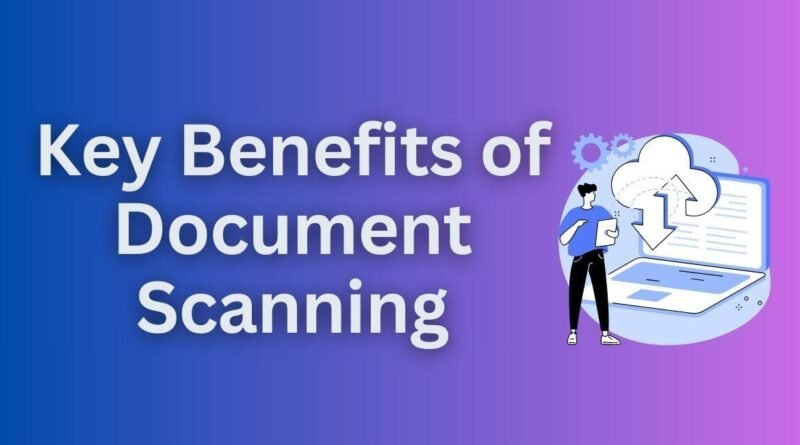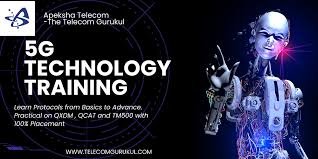Key Benefits of Embracing Document Scanning: Streamline Your Business Operations
Scanning documents has become a dire need in today’s brisk-paced business environment.
Managing physical documents is highly expensive and time-consuming, as they require much space and resources to store, organize, and retrieve the information they hold.
Other than taking space, paper-based records also have challenges regarding security, accessibility, and potential loss or destruction.
If you are also struggling with these types of problems, then this article is specially for you.
The best solution for the above problem is Document Scanning.
Scanning or Digitizing these records will enable organizations to make their record-keeping systems more effective.By doing so, the paper clutter will be reduced, enhancing your workflow, where teams can access critical information from anywhere and at any time.
In the following sections, we will explore the key benefits of document scanning, its role in modern business processes, and why automating data extraction is crucial for staying competitive in today’s digital age.
What is Document Scanning?
Scanning is the process of turning paper documents into electronic format and virtualizes their management, be it storage or retrieval. The advantages of a scanned document are ease of management, sharing, and security compared to its physical version.
Softwares like KlearStack do this automatically by extracting the relevant data from these scanned documents, freeing up a lot of time for business operations.
For better clarity of this concept, let’s look at a point that contrasts manual document management versus automated scanning workflows.
Many businesses in the US are still facing an issue of document digitization and document processing! I know, you are searching for the best document digitization companies in the US to streamline your document processes.
5 Key Benefits of Document Scanning for Businesses
Manual data entry is very time-consuming and prone to human error; however, all these problems can be solved by document scanning. Here are some significant benefits of Document Scanning for you and your business –
Boost Productivity and Accuracy with Document Scanning
Manual data entry is not only very time-consuming but also full of mistakes. Document scanning helps automatically turn physical documents into electronic format so a business can devote itself to more vital activities.
Thus, data extraction automation enhances this process by killing the need for manual input, which reduces the chance of human error and accelerates document processing. This will ensure that companies can deal with a high volume of documents more efficiently, increasing accuracy and freeing critical resources for more operable tasks.
Cost Savings: How Document Scanning Cuts Costs
Paper records require physical storage, and their manual data entry wastes time and labor. Scanning documents saves a lot of costs for a business. Softwares like KlearStack further reduce costs by automating data extraction, reducing human errors, and speeding up processes. This will save a considerable amount of money you spend on your employees just for document scanning and data extraction.
Faster Access to Information: Why Scanning is the Smart Choice
Manual searches through the files are time-consuming and counterproductive. In this regard, scanned documents have much faster retrieval. Document scanning further facilitates this with structured data extraction, giving businesses access to an ocean of useful information in seconds.
Securing Your Data: The Benefits of Going Digital
Physical files are prone to theft, misplacement, and destruction. Scanned documents are more safeguarded with encryption and access restrictions. It ensures a very high level of security; it secures your data by strict industry standards.
Helps Your Business Go Green
Digital operations reduce paper usage, which helps enterprises go green. Scanning documents enables companies to cut down on waste; they also offer slick facilitation of processes. So, start working towards making your business sustainable.
Apart from these five benefits, there are other advantages as well, including –
- Faster Document Retrieval
- Improved Data Security
- Enhanced Compliance with Industry Regulations
- Elimination of Manual Data Entry Errors
- Simplified Document Sharing and Collaboration
- Streamlined Workflow Automation
- Easy Integration with Existing Business Systems
- Improved Customer Service
- Support for Disaster Recovery with Digital Backup
The Consequences of Sticking to Paper: Why You Need Document Scanning
Manual Errors
Manual data entry is prone to errors, even trivial ones, which can become disastrous.
Incorrect information, misplaced digits, or lost details mean delays, financial discrepancies, and operational inefficiencies.
Organizations that rely heavily on human input to process documents pay the high price of these errors through rework and possible legal issues.
Time-Consuming Processes
Document processing in any organization is invariably slow and laborious.
Sorting out papers, putting them in order, and punching information into systems manually absorb valuable time intended for essential business activities.
For industries with very high demands for quick turnaround times, these delays can bring down productivity considerably, delaying decision-making and affecting the competitiveness of the whole enterprise.
The more documents a business handles, the larger the extent of such time-consuming processes, leading to bottlenecks and reduced efficiency.
Document Retrieval Problems
Physical documents pose a big problem when there is a need to retrieve them later.
Poorly maintained record-keeping systems or misplaced papers can make the correct document hard to find, taking hours or even days. As businesses grow, the number of records grows, too, and so does the problem.
Scalability with this kind of storage is impossible, and locating specific pieces of information becomes even more complicated, slowing down workflows and frustrating employees.
Some of the other challenges are –
- Risk of Document Loss or Damage
- Limited Data Security
- Inability to Share Information Easily
- Difficulty in Compliance with Regulatory Requirements
- Limited Collaboration Opportunities
- Inconsistent Document Formats
- Failure to Leverage Data for Analytics and Decision-Making
From Finance to Healthcare: How Document Scanning Drives Results
Transforming Financial Workflows with Document Scanning Solutions
Financial institutions must process many papers, starting with invoices, receipts, tax records, and financial statements, which cost them a lot of time. Moreover, the fact that human errors are standard leads to errors in reporting, delay, or non-compliance with specific regulations.
Document scanning helps digitize financial institutions’ records for easy storage and retrieval and processing of documents to ensure accurate reporting.
In other words, business applications should use the automation of extraction from scanned financial documents to speed up their economic practices. Financial document scanning & extraction may include invoice processing, providing real-time financial reporting, and keeping accounting standards.
This reduces the risk of any possible mistake and contributes to operational efficiency by freeing the finance teams to engage in more strategic tasks such as analysis and forecasting.
Legal Industry: Overcoming Paperwork Challenges with Document Scanning
Legal firms and departments face mountains of paperwork, with contracts, agreements, case files, and court documents frequently occurring. Tracking these by hand is extremely time-consuming and would likely result in delays and poor management of sensitive information.
Scanning legal documents will make their storage and retrieval quicker and reduce the possibility of losing some crucial files.
Document scanning means law firms could automate extracting critical information from contracts and legal filings, speed up case management, and review documents.
This would subsequently allow the legal to spend less time on administration and more time on the client and case strategy, all without violating the regulatory frameworks in this industry and with overall data security.
Banking Simplified: The Power of Document Scanning for KYC and Compliance
The banking industry is well-documented regarding customer onboarding, loan applications and KYC verification. Handling this manually is time-consuming and inefficient.
It often causes delays in customer identity verification or approving a particular loan. Banks can scan ID cards, utility bills, and other financial documents to digitize customers’ information, allowing faster verification. Document Scanning and automated data extraction are some of the best KYC verification methods.
Automating data extraction from these scanned documents will make the KYC verification process faster and more accurate.
Also, digitizing and automating document handling enable banks to securely store and access each customer’s data, thus enhancing customer service quality and operational efficiency.
Healthcare Gets Organized: The Role of Document Scanning in Patient Care
Another highly paper-intensive industry is the healthcare sector, where patient records, insurance claims, and prescription details must be maintained. If mismanaged, such documents may seriously affect patients in many ways.
It can even breach patient privacy, which is a fundamental right of patients. Scanning documents allows healthcare providers to securely digitize patient information, which can help ensure ease of retrieval and secure storage of critical medical records.
Best Document scan service providers leverage specialized technology named as Optical Character Recognition (OCR) to scan paper images and convert them into electronic formats. This technology makes the document data easy to store, edit, access, and manage efficiently.
Automating data extraction from such scanned documents allows practitioners to access patient history and insurance more quickly, reducing wait times and improving overall patient care.
Digitized records also comply with all medical regulations, including HIPPA, to keep patient information from falling into unauthorized hands and create easier workflows within medical facilities.
Start Document Scanning with KlearStack
Before purchasing software for document scanning & data extraction, find answers to the following questions –
Security: Is it able to protect sensitive data?
Speed: How fast can they scan documents?
Integration: Does it integrate with my current system?
Customization: Are they flexible to custom needs?
KlearStack fulfills all these points – it is scalable, secure, and customizable, meeting each business size’s requirements.
KlearStack is a document processing & extraction software with maximum accuracy reaching up to 99%. It is backed by solid AI and machine learning algorithms.
The significant features of this product are as follows:
- Template-Based Extraction
- Multi-Language Support
- Bulk Document Processing
- Self-Learning AI that learns with constant improvement
- User-friendly interface, easy to navigate
- Smooth Integration capabilities with primary tools like SAP by using API
These factors can significantly boost operational efficiency by as much as 500%.
On top of that, KlearStack is HIPAA, SOC 2, and ISO-certified for the highest security and compliance standards.
In short, KlearStack is a one-stop solution for data extraction and processing, especially for documents such as driving licenses, bank statements, and insurance papers.
To see KlearStack in action, you can schedule a free demo as well, by visiting KlearStack’s official website.


